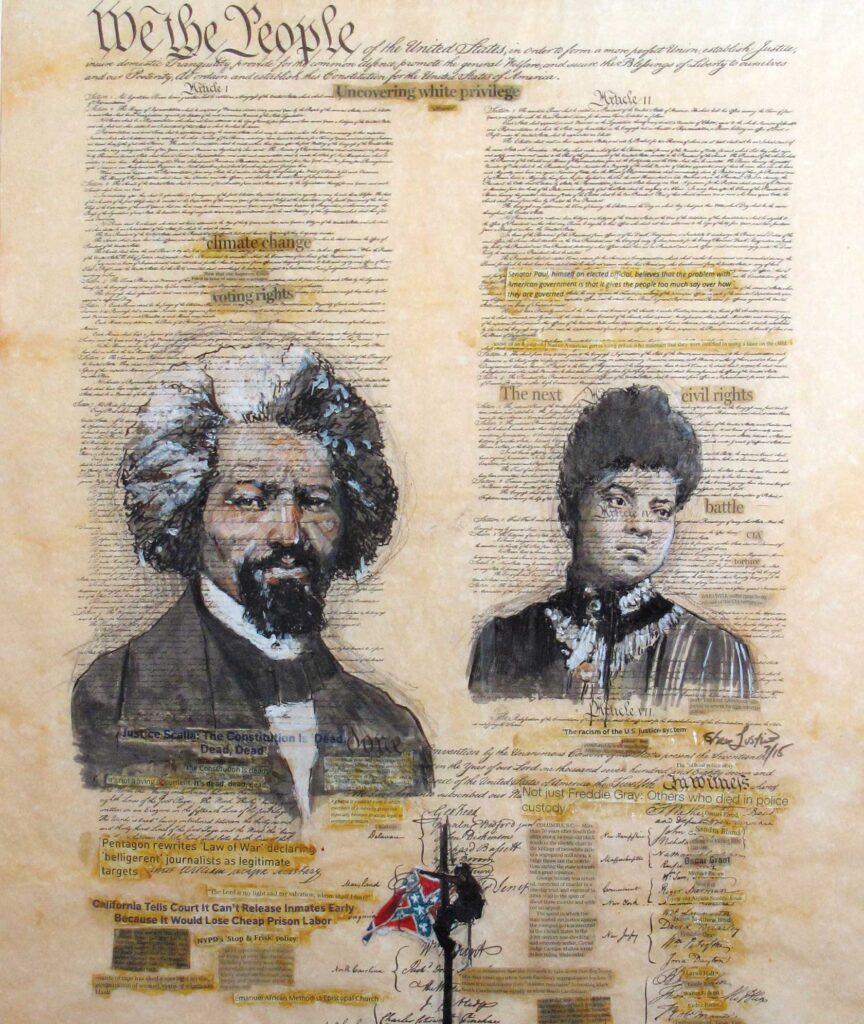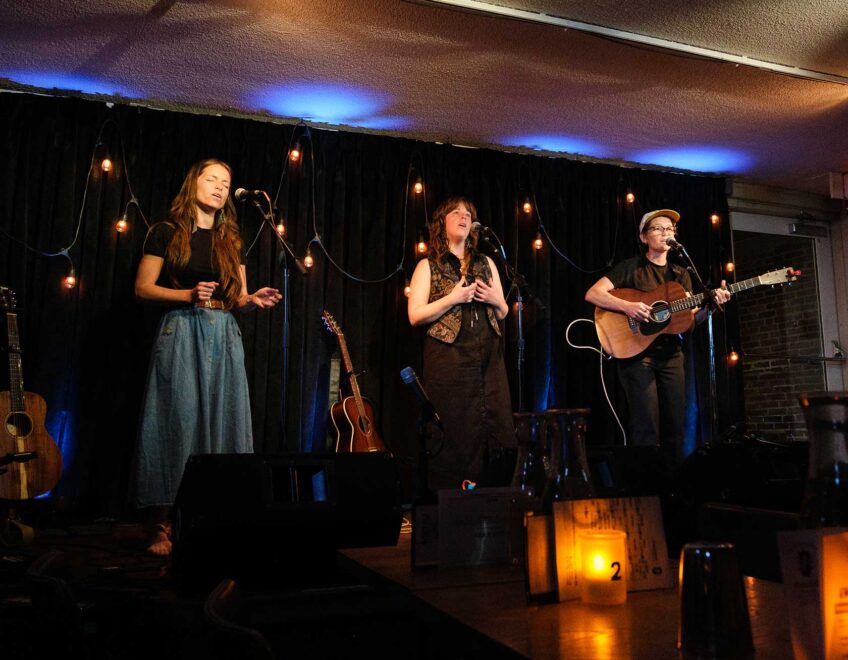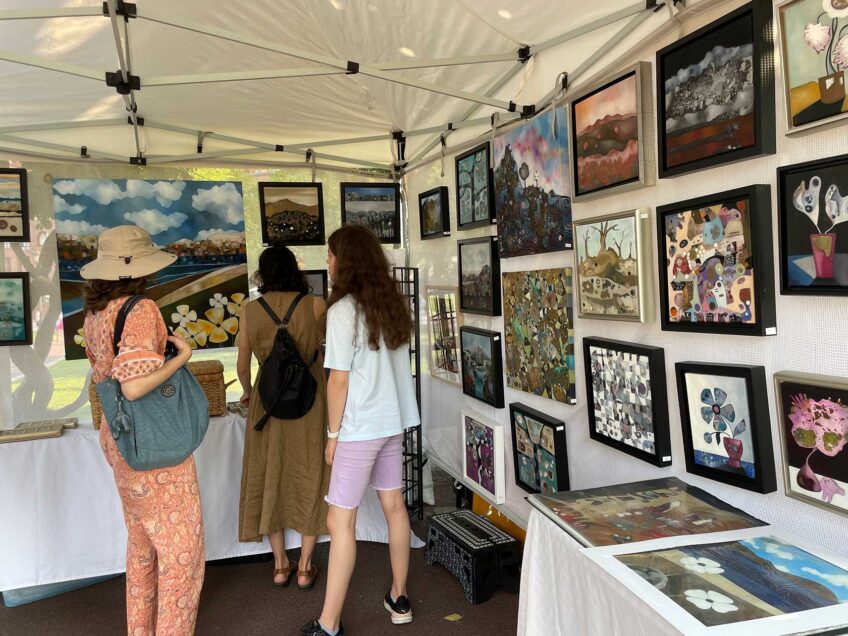AAMARP exhibition ‘Out of The Fire’ shines a light on African American art world

While many might suggest that the world is on fire and that times are ironically dark, it must be remembered that fire not only has the power to destroy but also to cleanse.
Such is the guiding premise of “Out of the Fire,” an exhibition of the African American Master Artists in Residency Program (AAMARP) on display at Milton Academy’s Nesto Gallery through April 17.
Created by artist Dana Chandler in the 1970s while looking for a safe place to store and show his own work after his studio was ransacked, AAMARP has been hosted by Northeastern University since 1977 and represents the nation’s first in-residence program to involve African American artists. In its five decades of existence, AAMARP has brought diverse artists and ideas to Boston and continues to engage thousands of fans and followers each year.
“Over the years, the selection [of participating artists] has been by…those leading the program,” explained AAMARP Director Dr. Reginald Jackson. “Currently, we have a membership committee that handles inquiries [and] reviews applicants and an executive committee that passes the recommendation to the body of AAMARP artists who vote.”
While AAMARP has been an important anchor of the African American art scene in Boston and beyond, the relationship between the organization and its landlord has not always been easy. In recent years, the school has closed the AAMARP studio space and even changed the locks in an effort to pressure the artists to find other venues.
“We have gone through the fire of having Northeastern attempt … three times to evict us,” Jackson explained, noting that his organization had helped the school procure the building in which they are currently housed. “The nature of the exhibits echoes our status.”
Regarding the situation with Northeastern, Vice President for Communications Renata Nyul, said, “For many years, members of AAMARP, a group with no current affiliation with Northeastern, have occupied space within the university’s Jamaica Plain warehouse, free of charge and around the clock. This practice is unreasonable, unsafe and extremely costly for the university to accommodate with the appropriate security. We have gradually reduced the hours of access to weekday hours and have been in conversation with the group about relocating.”
Two years ago, AAMARP emerged from the COVID-19 pandemic with an exhibition called “Resurgence.” According to Jackson, it spoke of “moving up and out of the trauma of being evicted as well as of the pandemic.” As is true of everything AAMARP does, Jackson suggests that the exhibition was also connected with “the reemergence of African American art and the artist’s struggle.”
When asked about the current exhibition, Jackson maintains that the theme is still related to emergence and also to the purification and rebirth that can come from fire.
“It is more metaphorical than literal,” he observed. “We feel we have been in a fire and are coming out.”
In fact, Jackson suggests, this emergence from fire is an almost constant state of being for the AAMARP artists.
“As marginalized folks,” he said, “we are always coming out of the fire — particularly today with the climate in the country and the world. It feels like we are coming out of the crucible and forming something we hope will be much more positive and informative and a balm as well as a cure to the trauma we are experiencing as humans on the planet.”
Among the 14 artists participating in “Fire” are Cambridge native Gloretta Baynes, Jeff Chandler (who pays tribute to his artistic brother Dana), Guyanan artist Marlon Forrester (who also curated the show), educator Shea Justice and local mixed-media artist Susan Thompson, many of whom have been exhibited at Milton Academy before. Among the pieces are Baynes’ photographs of Africa, Justice’s imposition of images of Frederick Douglass and Ida B. Wells on the Constitution and Chandler’s brightly colored totem.
When asked how the show landed at Milton Academy, Jackson explains that Nesto Gallery Director Ian Torney is a longtime friend of Forrester and was “very excited and interested in getting more art into the space.”
“When I saw [Marlon’s studio] I was amazed,” Torney recalled. “I felt we had to show this.”
Since bringing the AAMARP show to Milton, Torney has been sure that the public (which can see the space by appointment) and his students all have access to the art and the artists. In addition to hosting a panel discussion that featured AAMARP artists as part of Milton’s celebration of Black History Month, Torney and his talented team have also engaged students in workshops and other interactive artistic explorations.
“It’s been a great privilege to get to know the artists,” Torney said. “They are an extraordinary group.”
Torney hopes that after the show at Milton closes, the artistic collective can return to a community that is more open to its efforts and more appreciative of what it brings to the community.
“We want to support the AAMARP mission,” he said, “and we hope very much that they will endure at Northeastern.”
Though their future may be uncertain, Jackson is confident that his colleagues will continue to support each other and to show a strong, unified face to the world through their art and activism.
“We have emerged stronger,” he said, “and see an amazing future ahead as we craft the next iteration of new younger artists to take the helm.”






